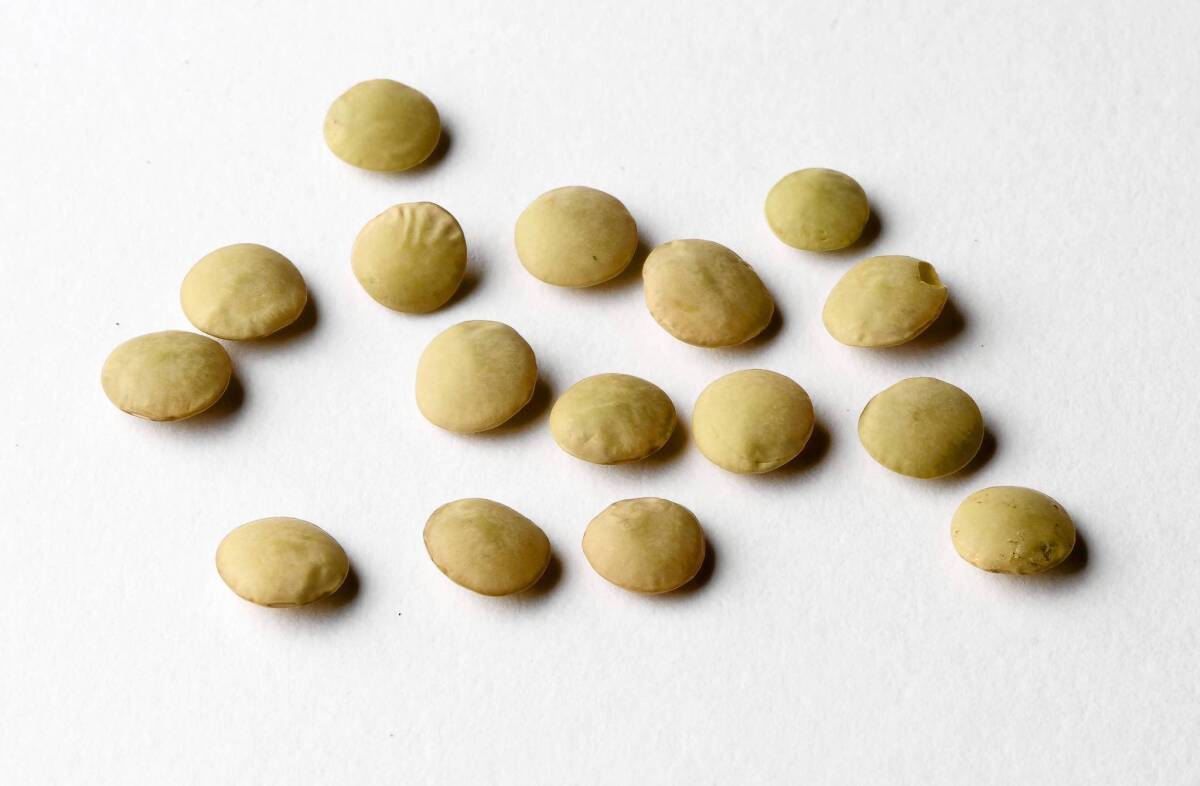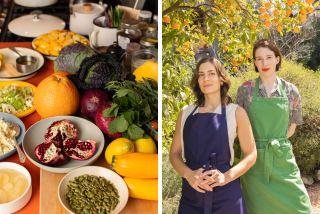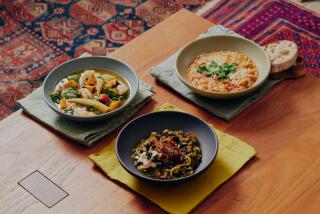The California Cook: Elevating the lowly lentil

As culinary fashion continues to wind inexorably lower on the luxury scale — from tournedos to beef cheeks, from foie gras to pork belly — it was probably inevitable that we would eventually come to lentils.
Representing the lowest and plainest possible food denominator since biblical times, when Esau traded his birthright for a bowl of soup made from them, lentils have always been regarded as a food you would eat only when you absolutely had to.
Yet look at a restaurant menu today or visit an upscale grocery and you’ll find lentils that come in a rainbow of colors and bear an atlas of place names.
You’ll find lentils that are reddish pink, canary yellow and pure ivory. Many chefs swear by the dark green lentils from Le Puy in France, but at Mozza, chef Nancy Silverton won’t use anything but the tiny tan Castelluccios from Italy’s Umbrian hills. You’ll even find lentils called beluga, after the ultimate in luxury foods, caviar.
I’ve cooked with lentils for years, but in a dabbling way. When I could find Castelluccios, I used them, and when Trader Joe’s stocked lentils from Le Puy at a great price, I’d buy them. But usually I just cooked whatever the supermarket had on hand.
But with lentils becoming socially acceptable, clearly a more organized analysis was overdue.
So I called Corti Brothers in Sacramento, my go-to source for obscure ingredients, and asked them to ship me every kind of lentil they carried. That was a half-dozen. I also picked up some Spanish Pardinas from Surfas in Culver City and, just for good measure, some regular brown lentils from my local supermarket.
Then I spent a day cooking, preparing all of them the same way: I added a half-cup of lentils to 2 cups of water, brought it to a boil and then simmered it uncovered until tender.
The first thing I learned is that, despite all of the different colors, origins and names, there are really two main kinds of lentils: those that are firm when cooked and those that are soft.
Generally speaking, the brightly colored lentils — canary yellow, bright red, ivory — are so soft they can almost be puréed with a spoon. These are best used as Indian dal. A side note: All lentils are dal, but all dal are not lentils (lens culinaris). Chana dal is from a split chickpea (cicer arietinum), and ivory lentils, urad dal, are from black gram (vigna mungo).
Setting those softies aside — I am interested in lentils that hold together to use in salads, soups and stews — among the firm lentils, I found differences mostly in cosmetics: size and color. They all cooked in roughly 20 minutes, and 1/2 cup raw yielded about 1 cup cooked.
The biggest surprise was just how good the plain brown supermarket lentils turned out to be. They were about the same firmness as the far more expensive Du Puys and Pardinas with a flavor that, while not quite as rich as the exotic lentils, was certainly more than acceptable.
Even the most expensive lentils don’t cost that much in the grand scheme of things, so I figure $3.50 a pound for the Umbrian lentils is a small enough price to pay for the difference in quality and that’s probably what I’ll use for dinner parties.
But it’s good to know that you can get a really delicious lentil for less than half that price right in your neighborhood. Either way, lentils are the ultimate in affordable luxury.
More to Read
Eat your way across L.A.
Get our weekly Tasting Notes newsletter for reviews, news and more.
You may occasionally receive promotional content from the Los Angeles Times.











